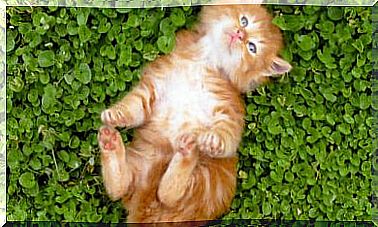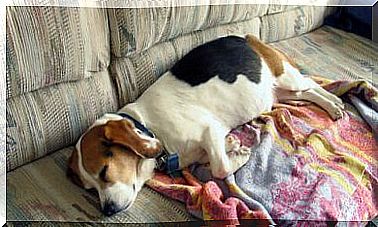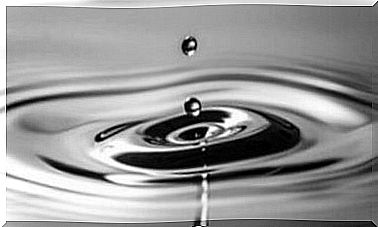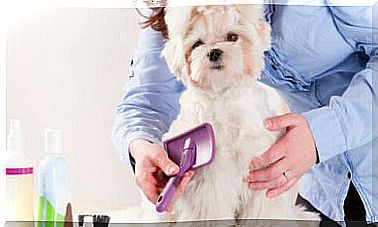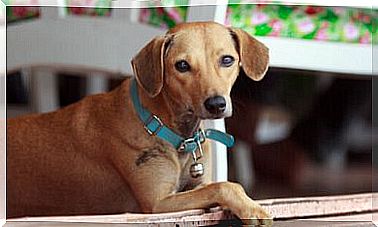The Risks Of Keeping The Dog In The Garden

In general, we associate green spaces with flowers, trees and animals with a feeling of peace and harmony. However, there are also many hidden risks to keeping your dog in the garden.
Although these faithful life companions greatly appreciate the outdoors, you must take some precautions to preserve and protect their well-being. Even the simple home garden can be a source of dangerous unexpected events for your four-legged friend. Let’s see to follow the risks of keeping the dog in the garden.
The impulsive curiosity of puppies
All dogs can be impulsive, curious and use their senses to discover every corner of their environment. However, puppies tend to be particularly fearless and instinctive when they begin to venture out to discover the world around them.
It is an inevitable and interesting stage in their life. But impulsiveness can end up being a health risk for your dog. Puppies have a habit of grasping everything with their mouth and using their nose to recognize the different stimuli present in the environment.
Although this type of attitude is part of their growth, it is important to pay attention to avoid accidents. Like young children, puppies lack awareness of the possible dangers around them.
Considering that a garden can be a real amusement park for the senses, several pitfalls can be hidden in it that should not be underestimated. In addition to coming into contact with numerous microorganisms, dogs can accidentally ingest toxic substances, such as poisonous plants or even pesticides.
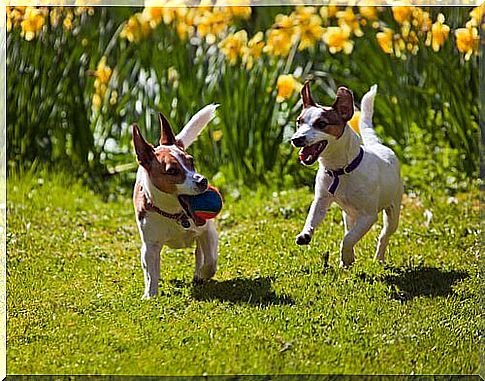
Although it depends on the peculiarities of each animal (some are more “curious” than others), some dogs maintain these impulsive characteristics throughout their life. Especially those breeds that instinctively tend to collect everything with their mouths, such as the Golden Retriever or the Labrador.
Garden elements dangerous for dogs
In general, it is good to organize yourself to avoid leaving toxic or corrosive products within the reach of children and pets. However, not always the same attention is paid to the home as to outdoor spaces. And this is where several problems can arise.
In the following list, we summarize the dangerous elements to avoid (or that must be used with extreme caution), if you keep your dog in the garden:
- Phytosanitary chemicals, herbicides, pesticides, poisoned baits and any potentially toxic substance.
- Insecticides for snails with metaldehyde .
- Lemongrass against mosquitoes (in the form of candles, incense, spirals, etc.)
- Toxic or irritating plants, such as vines, daffodils, azaleas, thistle, hydrangeas, brambles, tulips, etc.
- Traps for flies or other insects that incorporate methomyl into their preparation.
- Algae that can grow in ornamental fountains.
- Products for the chemical treatment of swimming pools, ponds or artificial fountains.
- Clods of earth with cocoa in their composition (usually they are used for fertilizing).
- Ornaments or accessories that contain small objects that can break and end up being swallowed by the animal.
- Sharp, rusty objects and garden items.
In general, it is necessary to carry out a check on everything that is left in the garden. Lawn care products, chemicals, tools, nets and other utensils must be stored inside the house, closed and safe. In the same way it will be necessary to carry out a treatment against possible poisonous animals: snakes, scorpions, spiders, etc. All animals mainly present in rural or poorly urbanized areas

Tips for keeping your dog in the garden
- It is necessary to avoid planting species that are poisonous or irritating to your pet. This will significantly reduce the risk of poisoning or a domestic accident.
- Prepare an entertainment area: if you want to leave your dog free in the garden and let him have fun in the open air, without damaging fences, furnishings or other items, you will need to set up a space where he can play safely.
- Create an environment conducive to his enjoyment, with his favorite toys. It will be a comfortable place to rest or his personal refuge. You can even enter a small pool if your dog loves water.


